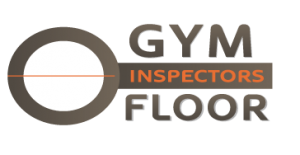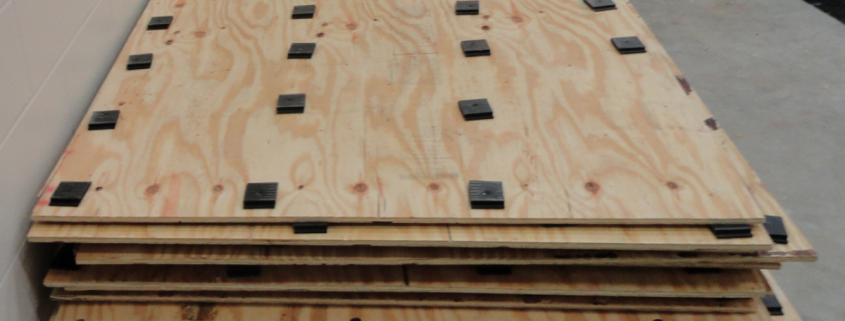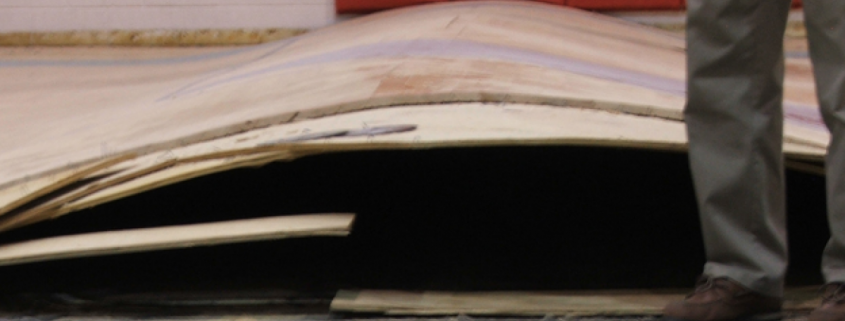Gym Floor Installations By Contractor
When choosing a Gym Floor contractor, make sure you check out his credentials. The installer SHOULD be certified by the Manufacturer. This certification helps assure that the installer was trained at some point on the intricacies of each system. It doesn’t necessarily guarantee a successful installation but it is better than nothing. This project, the installing contractor was NOT certified and didn’t install the pads with the right spacing. The manufacturer’s specifications require the pads to be installed 12″ on center and 6″ from the edges. Fortunately, the General contractor was alert enough to notice the problem before the plywood was installed.





